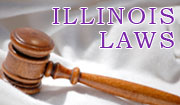
Children and Television
A Guide to Selected Government Information Available at WIU's Government Publications Library
Web version of this guide includes links to web resources.
Federal Government Information
Substance Use In Popular Movies and Music
This publication presents results of a study on substance use portrayal in the most popular movie rentals and songs of 1996 and 1997 to determine prevalence and context. These results support the argument that the media influences youth attitudes on smoking and drug usage. 1999
PREX 26.2:SU 1
Measuring Violence-Related Attitudes, Beliefs, and Behaviors Among Youths: A Compendium of Assessment Tools
Presented here are surveys to evaluate youth violence prevention programs. The measures are intended for use with youth ages 11 to 20 years and include tools for determining attitudes and beliefs related to television. 1998
HE 20.7952:V 81
New Directions for Public Television
This article explores public television's use of digital technology to enhance children's television, including "multicasting" (linking many shows with similar themes) and interactive television. New shows planning to use these technologies are highlighted.
Early Childhood Update. Spring 1999; ED 1.343:999/Spring/corr.; http://www.ed.gov/offices/OERI/ECI/newsletters/99spring/early1.html
Television Ratings System
This hearing debates the new television rating system and, in doing so, discusses the harm that television violence does to children. Industry and parental responsibilities are examined as well. 1997
Y 4.C 73/7:S. HRG. 105-157
MM Docket 93-48; FCC 96-335 In the Matter of Policy and Rules Concerning Children's Television Programming
This FCC Order on the web strengthens enforcement of the Children's Television Act of 1990 by better informing the public and adopting clarifying definitions and processing guidelines for broadcasters. The importance of children's television programming and the history of governmental efforts to promote quality programming for children are examined. Appendix D offers graphical depiction of TV usage by children and teens by day of the week and time of the day. 1996.
http://www.fcc.gov/Bureaus/Mass_Media/Orders/1996/fcc96335.htm
Government and Television: Improving Programming Without Censorship
This hearing seeks answers to television violence issues and the role the government should play in curbing the negative impact that violence and sexual innuendo have on children. Materials submitted for the record include "Sex, Kids, and the Family Hour: A Three-Part Study of Sexual Content on Television" and "Sex and the Mass Media". 1997
Y 4.G 74/9:S.HRG. 105-218
The TV Parental Guidelines
This guide on the FCC web site is intended to help parents understand the television rating system. It offers label and content indicators and their meanings.
http://www.tvguidelines.org
Legal Information
"Children's Exposure to Indecent Material on Cable: Denver Area Educational Telecommunications Consortium, Inc. v. FCC, An Interpretation of the Cable Television Consumer Protection and Competition Act of 1992"
This article takes a historical look at cable regulation and analyzes recent case law. First Amendment issues and ramifications are examined. Blocking alternatives, locked boxes, and v-chips are discussed.
DePaul Law Review. Vol. 47, No. 4 Summer 1998 pp. 1041-1086
Children's Television Act of 1990
One of the major goals of this Act is to increase the quantity of educational and informational broadcast television programming for children. Under FCC rules, the maximum amount of time allowed for commercials during children's programs on commercial and cable television is 10.5 minutes per hour on weekends and 12 minutes per hour on week days.
P.L. 101-437 104 STAT.996
For Legislative History of this Act, see 1990 U.S.C.C.A.A.N p.1605
Brandensbury v. Ohio
Lawsuit involving a 9-year old who was attacked and sexually assaulted by a group of assailants imitating a similar scene recently watched in television drama.
395 US Reports 444 (1969) These are all ways to help kids get a better understanding on how tv affects kids all over the world.
Walt Disney Productions, Inc. v. Shannon
This case held that a broadcaster was not liable for a child's injuries caused by imitation of acts viewed on a TV program.
276 SouthEastern 2d 580 (1981)
DeFilippo v. National Broadcasting Co
This case held that a broadcaster was not liable for the hanging death of a 13-year old imitating a recently watched TV stunt involving hanging.
446 Atlantic 2d 1036 (1982)
Special Legal Issues in Advertising - Electronic Advertising Directed to Children
This chapter provides background information on the Children's Television Act of 1990, a synopsis of new legislation, and constitutional theories regarding licenses, children, advertisers, and constitutionality. 1999
Modern Communication Law. Vol. 1, Chapter 3, Section 3.15C p. 350
LEGL REF KF 2765.M 63 1999 v.1
Children's Protection from Violent Programming Act
Although this Act ultimately did not become law, its Senate Report from the Committee on Commerce, Science, and Transportation contains much useful information on the background of TV violence legislation and research and the need for further focus on this topic. 1997
Y 1.1/2:SERIAL 14407 Senate Report 105-89
http://www.wiu.edu/libraries/govpubs/guides/childrenAndTelevision.php
Subject Guides
- FDLP LibGuides
- Abortion
- Adoption
- Advertising and the Law
- Affirmative Action
- Agriculture
- AIDS
- Alcohol and Related Problems on Campus
- Alternative Dispute Resolution
- Alternative Medicine
- Americans with Disabilities Act
- Animal Research and Humane Care
- Asset Forfeiture
- Aviation Safety
- Capital Punishment
- Censorship - Nonpolitical
- Censorship - Political
- Child Abuse
- Child Care
- Children and Television
- Citizenship & Immigration Services
- Cloning
- Confined Animal Feeding Operations
- Cookbooks
- Cuban Missile Crisis
- Cybercrime
- DNA
- DNA Testing of Criminals
- Domestic Violence
- Drinking and Driving
- Drone Warfare
- Drug Legalization
- Drug Testing
- Earthquakes (Illinois)
- Eating Disorders
- Elder Abuse
- Electronic Surveillance
- Endangered Species and Wildlife Conservation
- Euthanasia
- Federalism
- Financial Crisis
- Flag Desecration
- Gangs
- Global Warming
- Gulf War Illness
- Gun Control
- Hate Crimes
- Hazardous Waste Disposal
- Health Care Reform
- Homelessness
- Home schooling
- Homosexuals in the Military
- Intellectual Property
- JFK Assassination
- Juvenile Justice
- Korean War
- Learning Disabilities
- Literacy
- Methamphetamine
- Occupational Health and Safety
- Operation Desert Shield/Storm
- Police Misconduct
- Pornography
- Prison Reform
- POW and MIAs
- Problems of Adolescence
- Product Liability
- Rape
- Reproductive Technology
- Same-Sex Marriage
- School Prayer
- School Violence
- Seat Belts
- Sexual Harrassment in Education
- Sexual Harrassment in the Workplace
- Sexual Orientation Discrimination
- Small Business
- Space Exploration
- Terrorism
- Tobacco
- Unmanned Aerial Vehicles
- Vietnam War
- Violence in Mass Media
- Welfare Reform
- Women in Business
- World War I
- World War II





Connect with us: